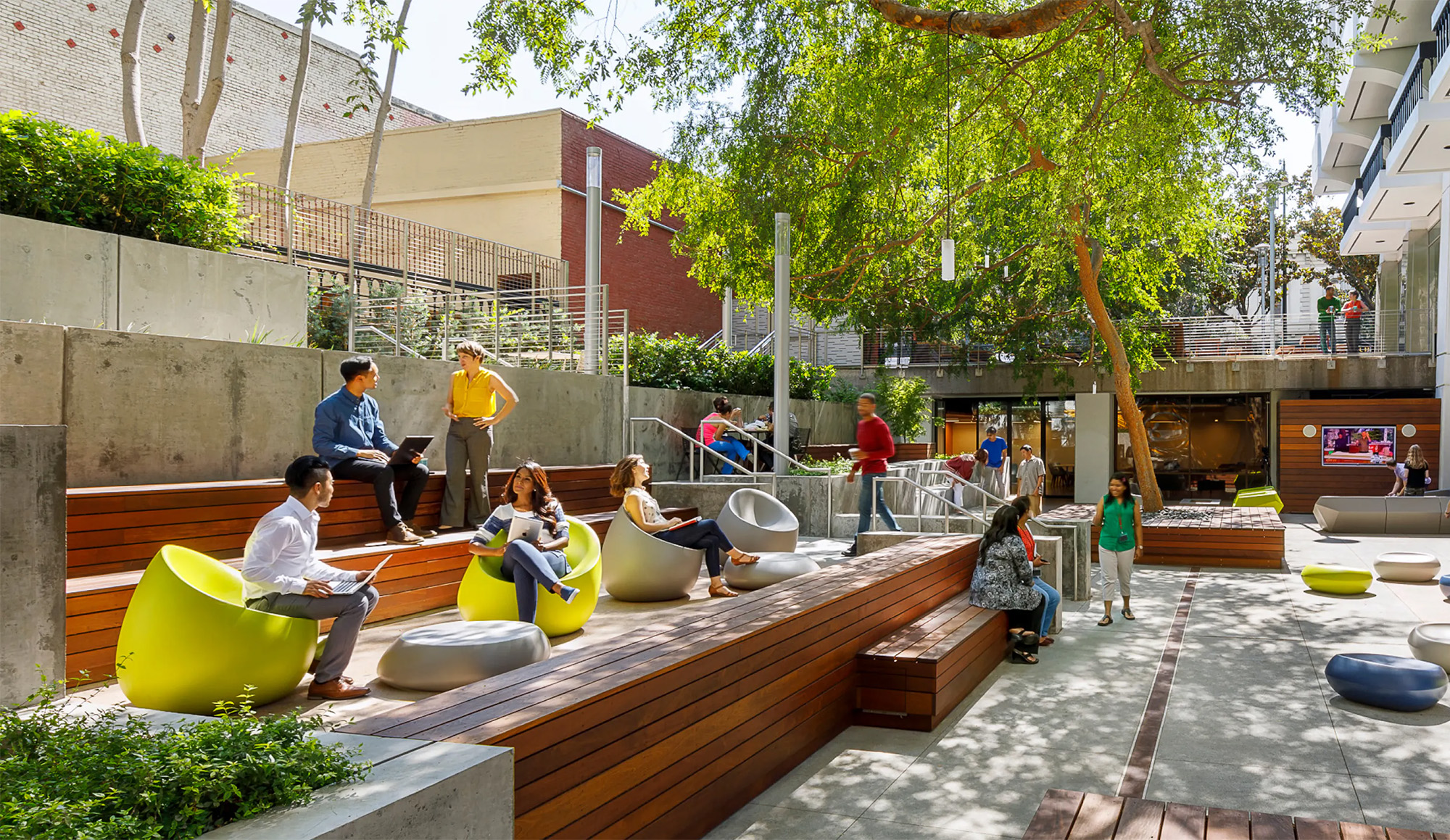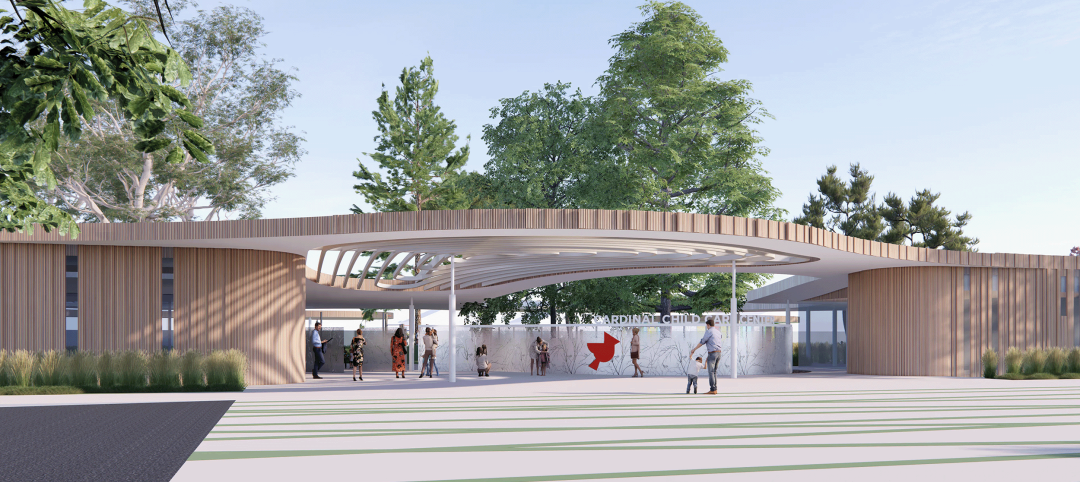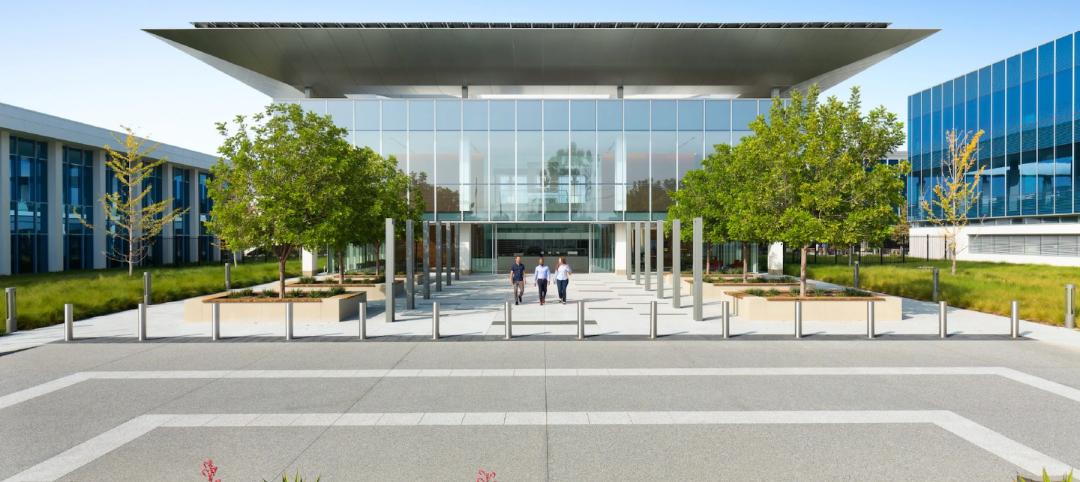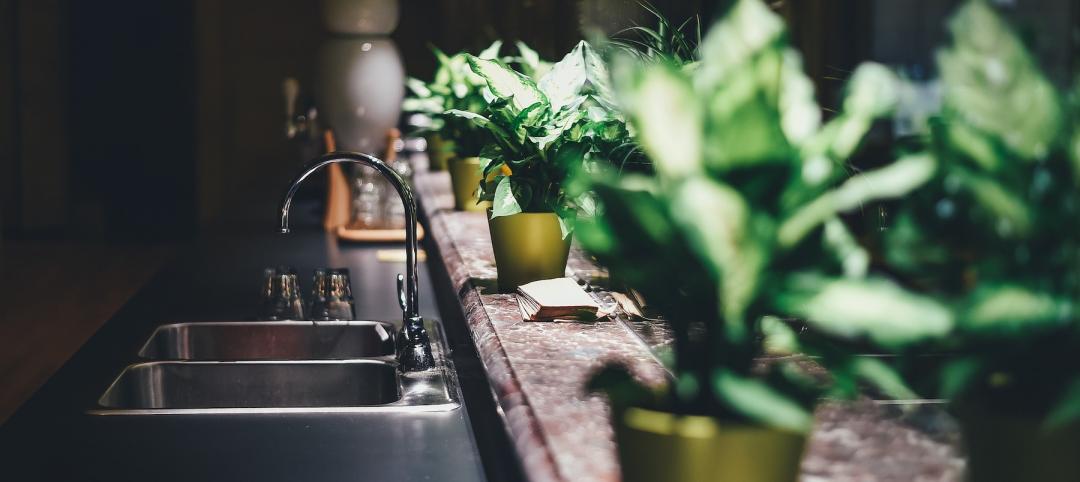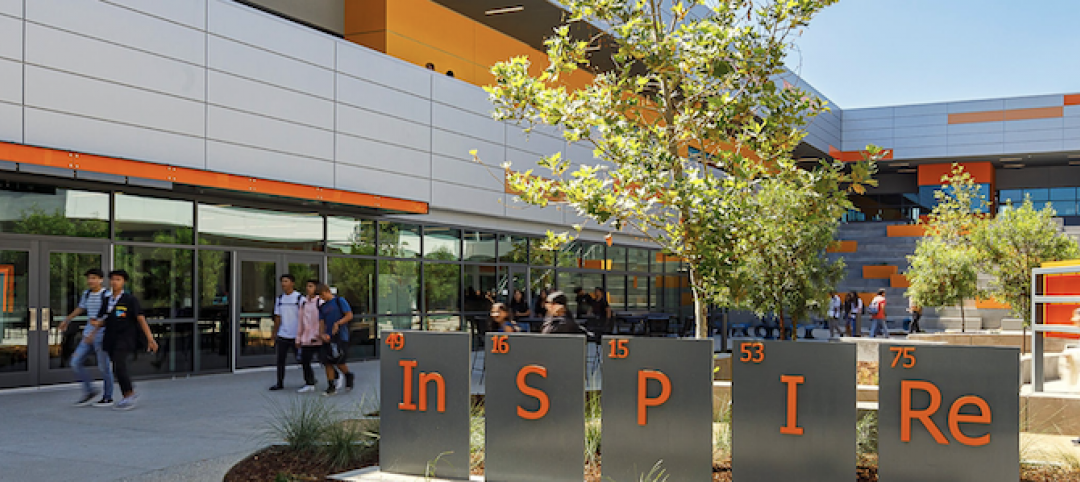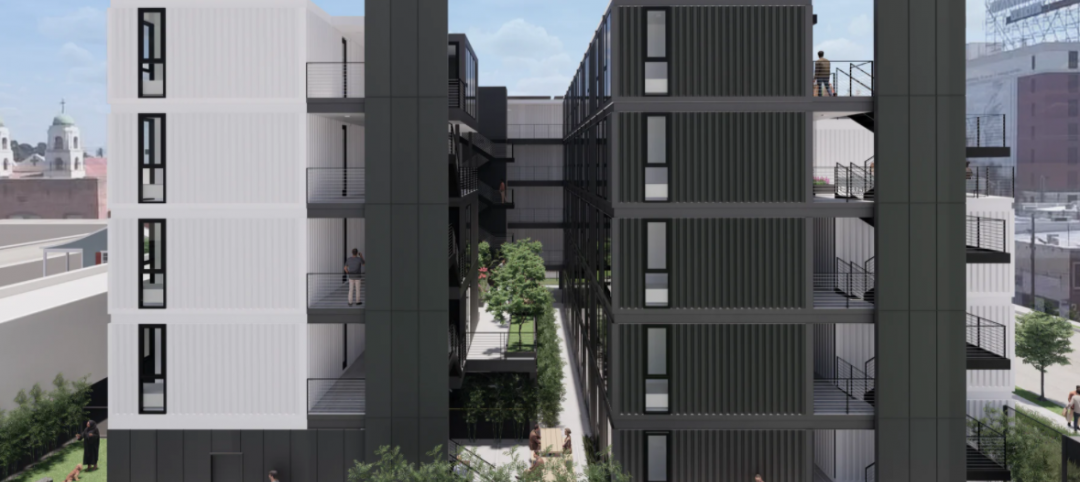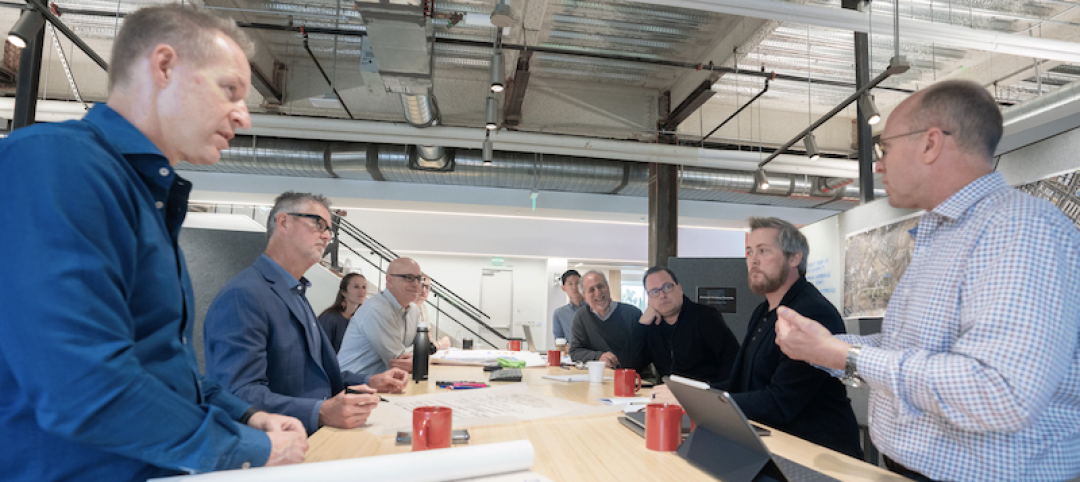When leasing agents take clients to see buildings, they know what’s important: people. They never want to show an empty building; it’s the people who give it energy and make it the type of place a company wants to be.
As building owners and businesses explore options for attracting employees back to the office and generating ROI for their workplace, the old people-first philosophy seems more important than ever. An expensive renovation and new furniture won’t create a dynamic workplace if people aren’t there to give it life. The architecture may be stellar, but if the building feels empty it doesn’t matter.
When we approach workplace campus design, we can do a better job of promoting the physical and mental wellness benefits a workplace can support. People deserve better places to go to.
Supporting Employees Through Workplace Campus Design
I’m encouraged by my recent conversations with people who are having positive experiences returning to thoughtfully designed workplaces. A change of scenery, access to nature, human interactions and convenient services like pet and childcare give people the freedom to choose different ways to work and interact throughout the course of a day. We have proven the value of spaces that attract a multigenerational workforce and support different modes of work.
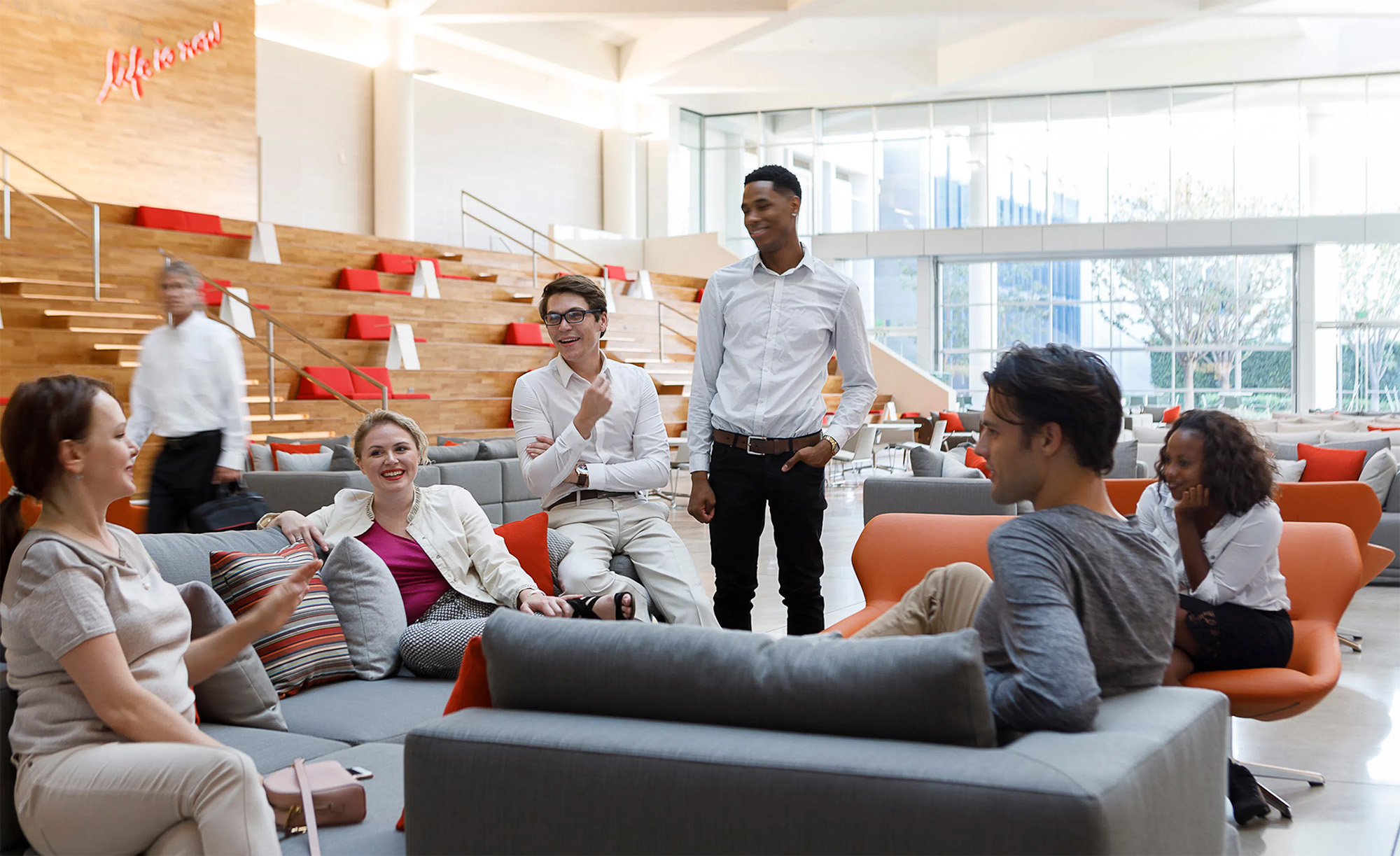
The campus or building can be considered as a flexible framework, with the workplace the stage for a variety of activities that promote team engagement. An engaged employee is happy and productive.
Design choices can play an important role in bringing people together and creating that critical mass. Where do you locate things? How do you create transparency and connection? How do you create that feeling that this place is alive and has energy that will attract people?
There are many ways for designers to cost-effectively bring people together and build the type of environment that will make people eager to return to the office. It starts with thinking differently about the assets available and using the gifts of the site or building to identify approaches that quickly and efficiently build that people energy.
Movement in Design
When we’re dealing with a community of buildings or different companies, we often try to break down the “super blocks” and create connected campuses or a network of uses. The struggling suburban office park can be redesigned into urban nodes, ecosystems that activate spaces and create that necessary critical mass of people and activity. Buildings can be opened to allow internal circulation elements; stairs and walkways promote movement along with visual and physical connections for people. This kind of movement is important for us physically and mentally. With wearable technology so prevalent, who isn’t keeping track of how much they move in a day?
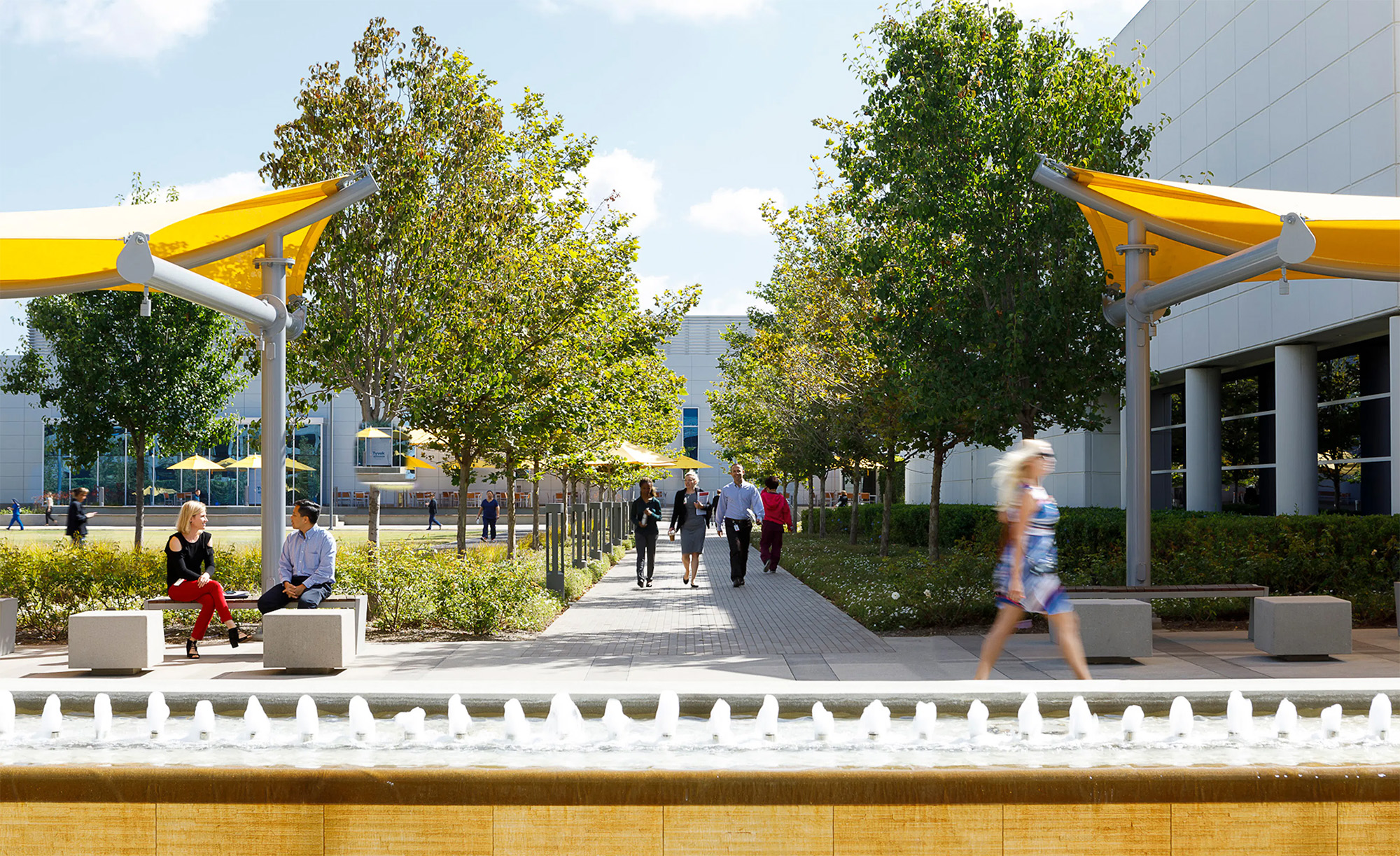
In many cases, we’ve been able to change a building’s dynamic by taking small or awkward spaces and making them more flexible, adding a people-friendly space. The small loss of rentable area is offset by the liveliness in the common areas, which leads to happier employees.
Amenities and Comfort
In the same way, amenity choices can help build that critical mass of people. Cafés with indoor/outdoor connections and highly branded or unique design elements can help create better spaces for people. Designing for discovery, adding cool or unusual details, helps create places where people want to hang out.
Within the workplace, comfortable living room environments and an array of private collaborative spaces provide that at-home experience, except with the resources and physical contact with coworkers that only the office can provide. Furniture, sensitive finishes and natural light all play a role in developing collaborative, inclusive spaces.
Indoor/Outdoor Connections
When we work on office campuses, we’re always thinking about the indoor/outdoor connections. It’s not just about roll-up doors. It’s about activating spaces close to each other and around those spaces. How do you let people flow from their workspace and take a quick meeting? Or have a conversation outside? Or take a quick walk? There’s often an opportunity to take an underutilized corner of a site and activate that space and program it. Maybe it adds a meeting area, or a sport space or a place where a group can dine together or host an event.
When you incorporate circulation elements with landscape, shading, technology and furniture, you start to see people use them in a variety of ways. There are opportunities to create infrastructure to support vendors, food trucks and mobile entertainment, connecting people with curated outside experiences.
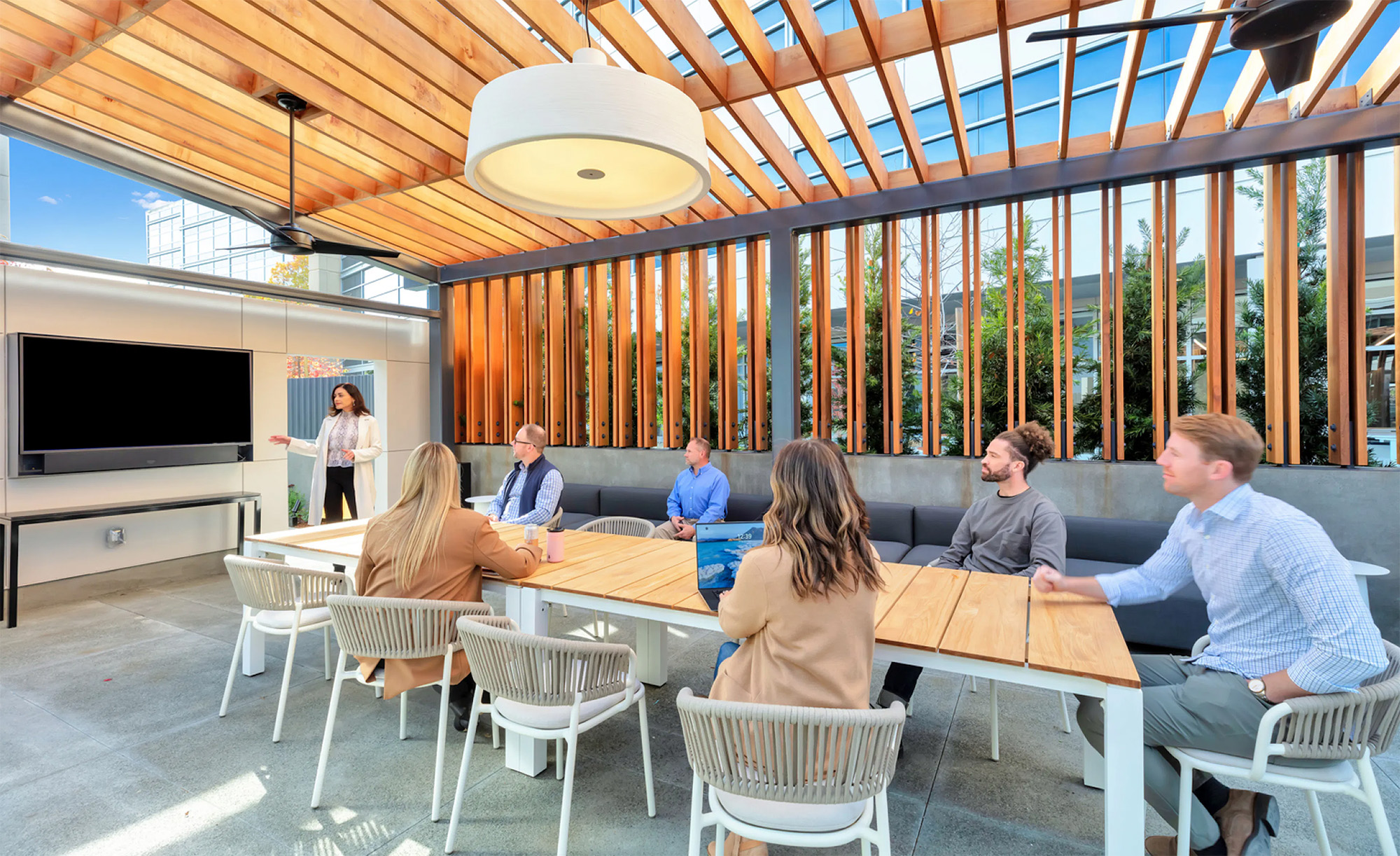
Accessibility is key. Pedestrian-oriented walkways that wander through a campus can create a network and link people to different spaces. When people can see the activity, they feel the energy, and it becomes a magnet for more activity.
The results are real. As they say, a crowd begets a crowd. On several of our recent projects, I’ve been able to see the difference. Spaces are alive around cafes and meeting areas. There is a buzz around the outdoor spaces.
I love seeing people in our own office using spaces in different ways at different times of the day. The coffee shop in the morning may be more inward with a few people; on a nice summer evening you see people outside having a happy hour or a meeting or an event. A shaded, wired outdoor space may host a speaking panel, or there will be people watching Monday Night Football. It’s nice when you have all these ingredients and they are used as they were intended to be used, at different times and in different ways.
When you see a campus full of people, it feels better. As building owners look for different ways to market their properties in challenging times, focusing on people spaces is always a good place to start.
About the Author
Nick Arambarri is responsible for leading the brand development, market strategy, client relationships, cultural development and business management of LPA’s Commercial practice. He has extensive experience guiding large, complex multi-disciplinary teams to design best-in-class office projects that set new standards for campus design, workplace environments and energy efficiency.
More from Author
LPA | Feb 8, 2024
LPA President Dan Heinfeld announced retirement
LPA Design Studios announced the upcoming retirement of longtime president Dan Heinfeld, who led the firm’s growth from a small, commercial development-focused architecture studio into a nation-leading integrated design practice setting new standards for performance and design excellence.
LPA | Mar 2, 2023
The next steps for a sustainable, decarbonized future
For building owners and developers, the push to net zero energy and carbon neutrality is no longer an academic discussion.
LPA | Dec 20, 2022
Designing an inspiring, net zero early childhood learning center
LPA's design for a new learning center in San Bernardino provides a model for a facility that prepares children for learning and supports the community.
LPA | Aug 22, 2022
Less bad is no longer good enough
As we enter the next phase of our fight against climate change, I am cautiously optimistic about our sustainable future and the design industry’s ability to affect what the American Institute of Architects (AIA) calls the biggest challenge of our generation.
LPA | Aug 9, 2022
Designing healthy learning environments
Studies confirm healthy environments can improve learning outcomes and student success.
LPA | Jul 6, 2022
The power of contextual housing development
Creating urban villages and vibrant communities starts with a better understanding of place, writes LPA's Matthew Porreca.
LPA | Mar 21, 2022
Finding the ROI for biophilic design
It takes more than big windows and a few plants to create an effective biophilic design.
LPA | Apr 28, 2021
Did the campus design work?
A post-occupancy evaluation of the eSTEM Academy provides valuable lessons for future campuses.
LPA | Feb 23, 2021
Rising costs push developers to consider modular construction
The mainstreaming of modular construction offers a cost-effective and creative solution to develop new types of urban developments.
LPA | May 20, 2020
From shopping mall to eSports supercenter
An aging shopping mall is reimagined as an eSports-focused mixed-use facility, creating new links between the community and the growing eSports industry.

